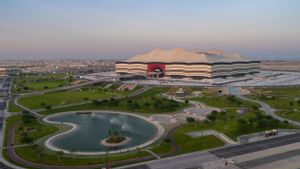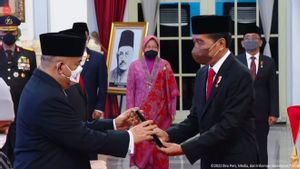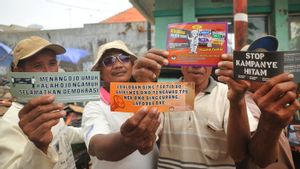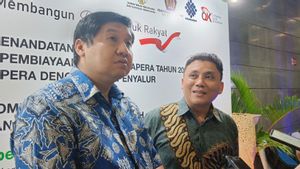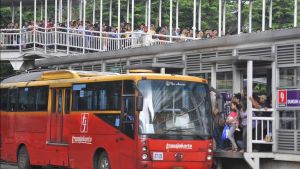JAKARTA – The migration of television broadcasting systems from analog to digital has benefits for the community, broadcasting institutions, and the state. By switching to digital TV, people will enjoy better TV broadcast quality with cleaner pictures, clearer sound quality, and more advanced technology.
In addition, the public also gets increasingly diverse broadcast content at no cost. This is what the Director General of Information and Public Communication of the Ministry of Communication and Informatics, Usman Kansong, explained in his official statement on the Kominfo website.
"Digital TV broadcasts are free-to-air and not subscription TV, so people don't need to subscribe or use internet data package quotas," he explained.
As for broadcasters, the migration of analog to digital systems will make the broadcasting industry more ready to compete in the era of convergence through the adoption of new technologies and the use of multi-channel broadcasts. Investment will also be more efficient in the long term, in line with the potential for using shared infrastructure in the digital TV era.
As for countries, the impact of switching from analog to digital systems will result in more efficient use of the 700 MHz frequency spectrum.

"The transition generates digital dividends from the use of radio frequency spectrum that can be used to realize faster internet that is more equitable, multiplier effects in the digital economy sector, and provide additional APBN revenues from the Non-Tax State Revenue (PNBP) sector," Usman explained.
The Ministry of Communication and Information officially stopped broadcasting analog TV in 230 regencies/cities on November 2, 2022, at 24.00 WIB. Although socialization and trials have been carried out since last April, there are still many people who regret it.
Especially when you find out that it costs extra to watch TV by buying a digital antenna and a set-top box.
"If the TV is smart, there's no need to buy a set-top box. If not, you can spend 300 thousand. So, the effect is the same. The direct cash assistance given yesterday is used for watching TV," said Momon, a resident of Depok, Thursday (9/11).
He did know that there was a free facility for this additional equipment for poor households, “But I don't know how to register. If you have to call, you will be charged again. Alright then".
In fact, in addition to contacting call center 159, the public can also apply for STB assistance independently through the website Cekbantuanstb.kominfo.go.id by submitting via email to the address listed.
Negative Sentiment
Not only a coffee shop chat, but the transfer of analog broadcasts to digital has also become a hot topic on Twitter. Media Monitoring Netray monitors it using the keywords tv && analog and tv && digital to see how netizens respond to the policy that has just been inaugurated by the government.
Netray found 12,010 tweets that used the keyword. Dominated by negative sentiment tweets as much as 4,326 or 36 percent. Meanwhile, tweets with positive sentiment were 1,544 tweets or 12.8 percent.
"A total of 2.9 million impressions were recorded in the monitoring period from November 1-4, 2022. In fact, the topic of changing TV signals was able to reach 129.3 million accounts," Netray wrote.
The intensity of the conversation peaked on November 3, 2022, after Kominfo officially stopped broadcasting analog TV. The total tweets in one day alone reached 8,371 tweets, the majority of which had a neutral sentiment.
The neutral sentiment that fills this conversation a lot comes from tweets asking for opinions regarding this change. One of them is a tweet from the @convomfs account which is also the number one account in the Top Accounts by Popularity line.

In his tweet, @convomfs asked the opinion of netizens regarding the disconnection of analog signal broadcasts in Indonesia. Like getting a platform, this tweet got the attention of other netizens by getting 8,286 impressions with details of 422 comments and likes that exceeded seven thousand.
Negative sentiment tweets include complaining about the uneven distribution of digital signals. As stated by Ervien Margio, “Digital TV does have a clearer picture, but if the digital signal is bad, it's hard to get the channel and the picture tends to lag. It's still better analog."
In addition, there are also many netizens who think that changing broadcasts does not make it easier or beneficial for the community, but instead makes it more difficult, especially for certain layers of society. The capture of digital signals on analog TV which requires special equipment is one of the reasons why this policy makes it difficult for the community, especially the lower middle class.
"Parents' entertainment at home is only TV, everything uses the rules to move to digital. If it's just an excuse to watch with clear quality, you don't need to switch to digital, you can still watch it. It's already hard, it's getting harder and harder," wrote the account @teguhbdhadi, still reported by Netray.
The new policy that has not been accompanied by a renewal of the affordability of digital signals has in fact created new unrest among the public. Moreover, according to BPS, the number of TV viewers in Indonesia is still in the range of 86.86 percent.
According to the Indicator survey, 36.1 percent of people use TV as a medium for daily consumption, with details of 45.7 percent watching entertainment, such as soap operas and sports broadcasts.
"The affordability of the signal is still not maximized and the additional costs that must be incurred to follow this policy of updating digital tv broadcasts make it difficult for some people, especially the lower middle class, who will lose entertainment if they do not follow this new policy," Netray concluded.
VOIR éGALEMENT:
The English, Chinese, Japanese, Arabic, and French versions are automatically generated by the AI. So there may still be inaccuracies in translating, please always see Indonesian as our main language. (system supported by DigitalSiber.id)




